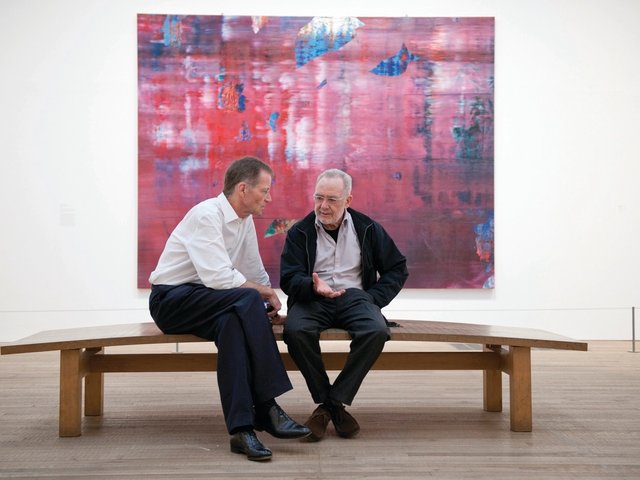It is not generally known that what is now Tate Britain opened in 1897 as the National Gallery of British Art and was a department of the National Gallery. Twenty years later the gallery on Millbank was given its own director and board of trustees and three years later a new identity, National Gallery, Millbank. In 1932 the name was changed to the Tate Gallery, in honour of its sugar daddy and already its informal name. It was not until 1955 that it became fully independent of the National Gallery and owner of all the art in its galleries and vaults.
Is the departure of the brilliant Nicholas Serota next year as director of the Tate the moment that Tate Modern and Tate Britain started a similar journey towards independence?
The Tate trustees are searching for Serota’s replacement. But Serota is irreplaceable. In his 28 years as the Tate’s director, he has created the world’s most successful Modern and contemporary art museum, rebuilt Tate Britain, opened and is expanding Tate St Ives, has plans for Tate Liverpool, and tours Artist Rooms to 34 partner museums. He has displayed the collection in new ways and curates superb shows. On the business side, Tate generates more non-government revenue than any other national museum in the UK. Serota is charming, decent and a witty (without a note) speaker. It is not just that he has a range of qualities rare in the world, let alone the world of museums; only he has the stature to run what he has wrought.
For a start, directors with the skills and experience to run galleries as large as Tate Britain and Tate Modern might be content to report to Serota, but not to his successor. Even so, few of the directors serving under him have lasted for long, especially at Tate Modern, his baby. At the moment, their function is “to conceive and execute the curatorial programme of collection displays and exhibitions”; they are now in charge of their acquisitions—previously a central function. They are chief curators plus. They sit on executive and directors’ committees that they do not chair. They are not museum directors in the same way as their peers.
Tate is an organisation with Serota firmly at the helm, run as one entity united under one logo carrying out one vision. As so often happens when the founding genius goes, the organisation needs to be redesigned so that “mere mortals” can continue to run it. Outstanding museum directors need time (as Serota has shown), but to attract the best people who will really stay, each Tate needs directors who are really in charge.
The unitary Tate has been a success, but Serota’s departure is not the only reason for thinking a change is in order. Digital Tate is all well and good—and it is good—but the best museums are rooted in a place, each with a distinctive personality linked to their collections and exhibitions. Tate Modern is modern. The interior of the new Switch House is austere. Perhaps it would do even better with its own logo and brand and philosophy and education policy—and its own board. Tate Britain, gracious and decorative, might be better reverting to the Tate Gallery, to allow its personality to shine through. With attendance of 1.3 million, a mere fifth of Tate Modern’s number, the Millbank gallery is in danger of being the poor relation; but with its own board and identity, it might find better ways of keeping up. Tate St Ives and Tate Liverpool have an autonomy granted by distance from London. They use the art and other resources of both Britain and Modern, and are less of a problem. Sensible sharing arrangements could continue under a split structure.
The idea of splitting Tate is uncomfortable. Why fix something that is not broken? Lord Browne, in his eighth year as Tate’s chairman, may be reluctant to embark on a radical overhaul. He and his fellow trustees may feel that Tate’s size gives it clout with the government. They will also point to the economies from having central departments for fundraising, storage, IT and the like and argue that divorce would be costly. However, the trustees would not be doing their duty if they did not investigate whether the current structure can outlast its creator.
At the very least, the trustees should devolve more power to the museum directors and not try to find another director with Serota’s range of responsibilities and expertise. If Tate has to remain united, at least for the foreseeable future, the person at the centre should be an art lover but not an art expert, someone running the business as a whole and the central departments, and capable of engaging intelligently with the directors on budgets and the financial implications of their exhibition programmes. And since “director of Tate” implies art supremo, something like “managing director” (a title currently used by Serota’s deputy) or chief executive would be more appropriate. They must make it clear that Tate is not trying to clone Serota.
• David Gordon is a museums consultant and a former trustee of Tate and Secretary of the Royal Academy of Arts



